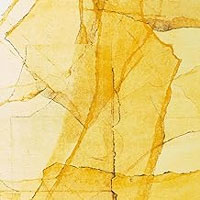Wadada Leo Smith & Amina Claudine Myers • Central Park’s Mosaics of Reservoir, Lake, Paths and Gardens Red Hook Records RH1005
Wadada Leo Smith epitomizes that AACM migration from DIY gigs to Pulitzer Prizes, as any fan of creative, improvised music, modern string quartets (his are lovely), or electric-Miles cover bands can tell you. Dvorák rightly sussed that African American music was the key to developing a national style. It worked for Gershwin. Smith’s commissions from reading ensembles are many, but he still plays in jazz-referential settings where musicians infuse his compositions with additional spark in the moment -- as on, say, his sprawling 2016 quintet suite America’s National Parks (Cuneiform). The Wadada-Amina duo’s Central Park’s Mosaics. . . . is a miniaturized sequel of sorts, saluting Manhattan’s giant green space. Four of seven pieces are named for locations there. Central Park's Mosaics . . . is a respite, and thus a perfect subject for a composer who’s championed open spaces, relief from congestion, and respecting other folks’ space: it’s what made his early trio with Anthony Braxton and Leroy Jenkins stand out: the anti-frantic 1960s avant-garde. Central Park’s . . . snug paper gatefold sleeve is environmentally friendly, and the music suitably contemplative. The measured cadences of kickoff “Conservatory Gardens” set the tone. Smith’s open-horn sound is gorgeous in a weathered way, and he’s never in a hurry, lingering over his variable but contained voice-like vibrato. The pianist, never one to overplay, is ever-attentive to his intent, deploying different motifs in the upper, middle and lower registers, in free combination and without crowding. Charter AACMers know: playing less, you can listen harder. Delta-blues feeling surfaces on “Albert Ayler, a meditation in light” and in Smith’s Harmon-muted solo sequences on “The Harlem Meer.” (There is one rather obvious snip at a quiet moment, cutting off decaying piano.) On “Imagine, a mosaic for John Lennon,” harmon mute (just) recalls Lennon’s nasal singing. (He also loved slow tempos.) Myers quietly doubles the melody (with a few bass bombs), setting up her own single-notey solo meditation. Her composition “When Was” is all piano, with tolling repeated notes (nicely shaded) a prominent motif; she’ll play with sustain pedal down, but doesn't let backgrounds cloud over. She plays organ on “Jacqueline Kennedy Onassis Reservoir”: thick droning texture, slow changes, and calliope timbre low on the keyboard. Red Hook owner-producer Sun Chung learned his craft at
ECM, and the production style is a bit ECM-lite: three seconds of silence before a
reflective opening track instead of six; less pronounced studio reverb, but still enough
to effectively buff Smith’s very human brass tone and Myers’s ringing support.
They recorded at the venerable Sear Sound on 48th Street, less than a mile from Central
Park. |

 hese duo partners
born three months apart in 1941 and ’42 share red-soil rural roots as well as a
lifelong commitment to new music. Trumpeter Leo Smith, stepson of Mississippi Delta
bluesman Alec Wallace, learned early to give instrumental music vocal inflection. Claudine
Myers was raised in a tiny Arkansas town with a two-room school and a rocking Methodist
church, and also outside Dallas where she learned gospel piano and the art of
accompaniment; later came organ lessons, classical studies and jazz gigs in Little Rock.
Each musician trekked north to Chicago, where they met via that hugely influential
incubator of musical talent that slowly migrated from 20th-century jazz clubs to
21st-century concert halls, the AACM collective both joined early (Amina, very early).
Smith and Myers recorded together only on a long suite where they barely interacted, from
saxophonist Kalaparush Maurice McIntyre’s Humility in the Light of the Creator
(Delmark) in 1969. It was time for a reunion -- recorded in 2021, and released just as
Myers got inducted as an official NEA Jazz Master.
hese duo partners
born three months apart in 1941 and ’42 share red-soil rural roots as well as a
lifelong commitment to new music. Trumpeter Leo Smith, stepson of Mississippi Delta
bluesman Alec Wallace, learned early to give instrumental music vocal inflection. Claudine
Myers was raised in a tiny Arkansas town with a two-room school and a rocking Methodist
church, and also outside Dallas where she learned gospel piano and the art of
accompaniment; later came organ lessons, classical studies and jazz gigs in Little Rock.
Each musician trekked north to Chicago, where they met via that hugely influential
incubator of musical talent that slowly migrated from 20th-century jazz clubs to
21st-century concert halls, the AACM collective both joined early (Amina, very early).
Smith and Myers recorded together only on a long suite where they barely interacted, from
saxophonist Kalaparush Maurice McIntyre’s Humility in the Light of the Creator
(Delmark) in 1969. It was time for a reunion -- recorded in 2021, and released just as
Myers got inducted as an official NEA Jazz Master.